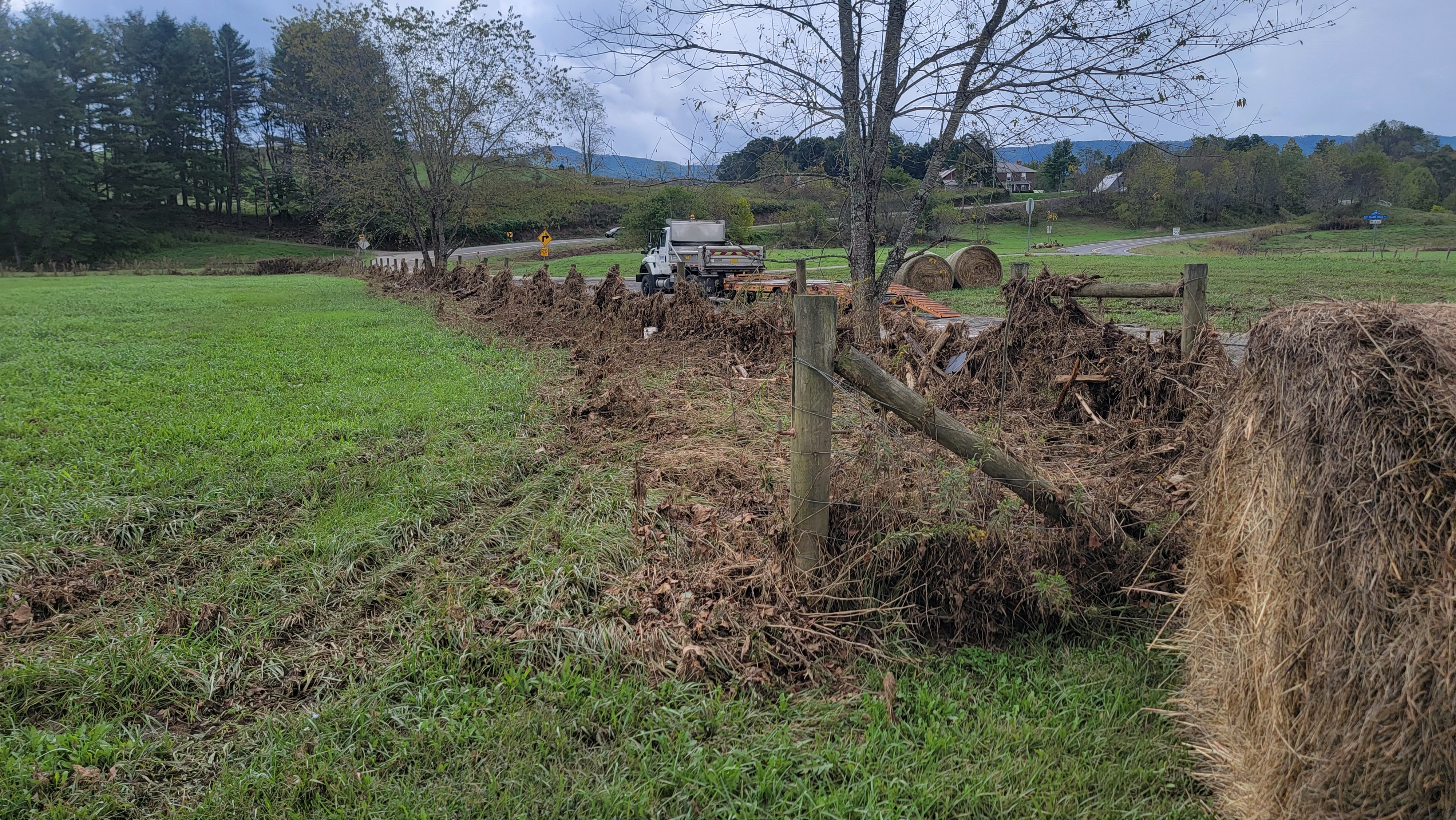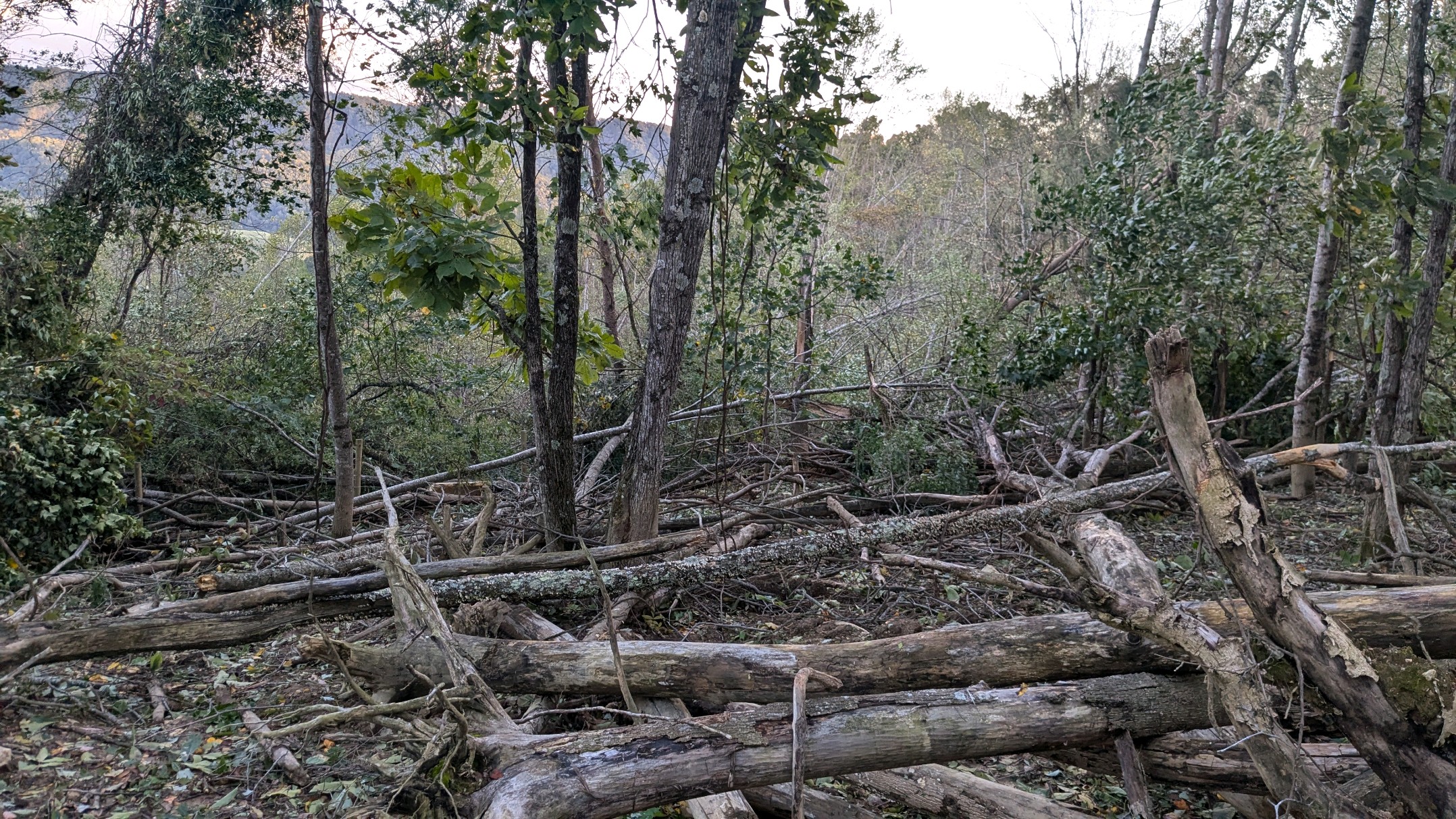For Charles Doane, cleaning up after the remnants of Hurricane Helene will be a long process.
Doane owns Doane Farms, which produces beef cattle, pigs, fruits and vegetables on 250 acres in Smyth County.
Strong winds from last week’s historic storm leveled about 25 acres of trees and knocked down several miles of fences that kept in cattle and hogs on the family-owned farm. About 10 of the hogs were killed, while other cows and pigs were let loose because of the ruined fences.
“We’ve got animals just running large right now, trying to get the fences back up,” Doane said.
Besides repairing fences, Doane has been busy using a small bulldozer to clean up washed-out roads. He hopes to get an excavator to salvage logs from the fallen timber and get that part of the farm’s property back to a usable state.
“Right now you can’t even walk across it. The tree limbs are just all knocked down on top of each other,” he said.
Doane is one of many farmers assessing the storm’s impact on their operations in Southwest Virginia, where agriculture ranks among the largest industries.
Farmers and local officials report numerous washed-out roads and bridges, wrecked barns, waterlogged crops, downed trees and destroyed fences.
Andy Overbay, an agricultural extension agent for the Virginia Cooperative Extension in Smyth County, estimated that more than 100 of the county’s 800 farms were impacted to some degree.
“One hay barn in particular was literally sucked out of the ground whole and put on its roof. … You can see the wreckage of the barn, and the hay that was once inside the barn sitting beside it,” Overbay said. 
When all affected structures, fencing, crops and timber are considered, he estimated the county saw at least $10 million in damage.
“To be honest, I feel confident in that being conservative,” he said.
Much hay that had been harvested has been ruined. Hay that wasn’t washed away might now be so waterlogged that animals won’t eat it, Overbay said.
“It becomes a thousand-pound ball of trash,” he said.
In Washington County, extension agent Phil Blevins said that many farmers lost a “tremendous” amount of timber from strong winds.
And like Overbay, Blevins reported seeing miles of destroyed fencing.
“One farm, he said they didn’t get a lot of damage other than losing some hay, but he’s got a cousin that don’t even know where his cows are now,” he said.
Those stories are examples of the destruction from the storm that in Southwest Virginia brought heavy gusts of wind and widespread flooding when 5 to 7 inches of rain — and even more in some places — fell on top of precipitation that had already accumulated before Friday’s direct impact.
The stories have also been coupled with accounts of the region’s residents helping each other.
“We met families right outside of Independence in Grayson County,” Gov. Glenn Youngkin said during a news conference Monday, “and these are hard-working farmers, and they had literally seen their entire hay crop ruined. They had seen their entire berry — organic berry farm completely ruined. And yet they were more worried about their neighbors, and how do we get to their neighbors because the roads are still blocked. That’s what they were worried about.” 
Overbay has been collecting information about affected farms to help coordinate efforts with state and federal agencies.
“Some of the folks who lost the most would tell me, when they’d call in, they’d say, ‘You know, we’ll be all right,” Overbay said. “‘We don’t need anything. We knew you needed the numbers, here you go, but when the money comes available, send it to somebody who needs it. I don’t need it.’”
President Joe Biden has approved a disaster declaration for Grayson, Smyth, Tazewell, Washington, Wise and Wythe counties and the city of Galax, opening up federal assistance there. Youngkin said Monday that he anticipates five cities and 13 counties will be added to the list.
Figuring out just how many farms were impacted and tallying up the region’s losses will take time. Officials are still assessing the damage, a task that has been impeded by blocked roads, spotty cellphone service and a pervasive lack of electricity.
Unlike after a tornado — where evaluating damage often involves following a well-defined path — assessing damage after a flood is less straightforward, Overbay said.
“The trouble with floods is, you may start down a road and it’s perfectly fine, and by the time you get to where you think you want to go, there’s no more road left,” he said.



